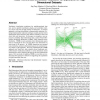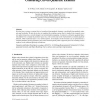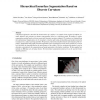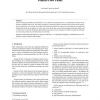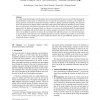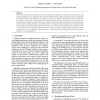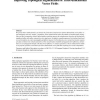135
Voted
VISSYM
2003
15 years 2 months ago
2003
Traditional visualization techniques for multidimensional data sets, such as parallel coordinates, glyphs, and scatterplot matrices, do not scale well to high numbers of dimension...
103
Voted
VISSYM
2003
15 years 2 months ago
2003
We show how to extract a contour line (or isosurface) from quadratic elements—specifically from quadratic triangles and tetrahedra. We also devise how to transform the resultin...
128
Voted
VISSYM
2003
15 years 2 months ago
2003
Trivariate data is commonly visualized using isosurfaces or direct volume rendering. When exploring scalar fields by isosurface extraction it is often difficult to choose isoval...
127
Voted
VISSYM
2003
15 years 2 months ago
2003
A high-level approach to describe the characteristics of a surface is to segment it into regions of uniform curehavior and construct an abstract representation given by a (topolog...
124
Voted
VISSYM
2003
15 years 2 months ago
2003
Feature tracking algorithms for instationary vector fields are usually based on a correspondence analysis of the features at different time steps. This paper introduces a method ...
138
Voted
VISSYM
2003
15 years 2 months ago
2003
We present a robust method for extracting 3D centerlines from volumetric datasets. We start from a 2D skeletonization method to locate voxels centered with respect to three orthog...
119
Voted
VISSYM
2003
15 years 2 months ago
2003
For volume rendering of regular grids the display of view-plane aligned slices has proven to yield both good quality and performance. In this paper we demonstrate how to merge the...
VISSYM
2003
15 years 2 months ago
2003
87
Voted
VISSYM
2003
15 years 2 months ago
2003
93
Voted
VISSYM
2003
15 years 2 months ago
2003
We present three enhancements to accelerate the extraction of separatrices of three-dimensional vector fields, using intelligently selected “sample” streamlines. These enhanc...
